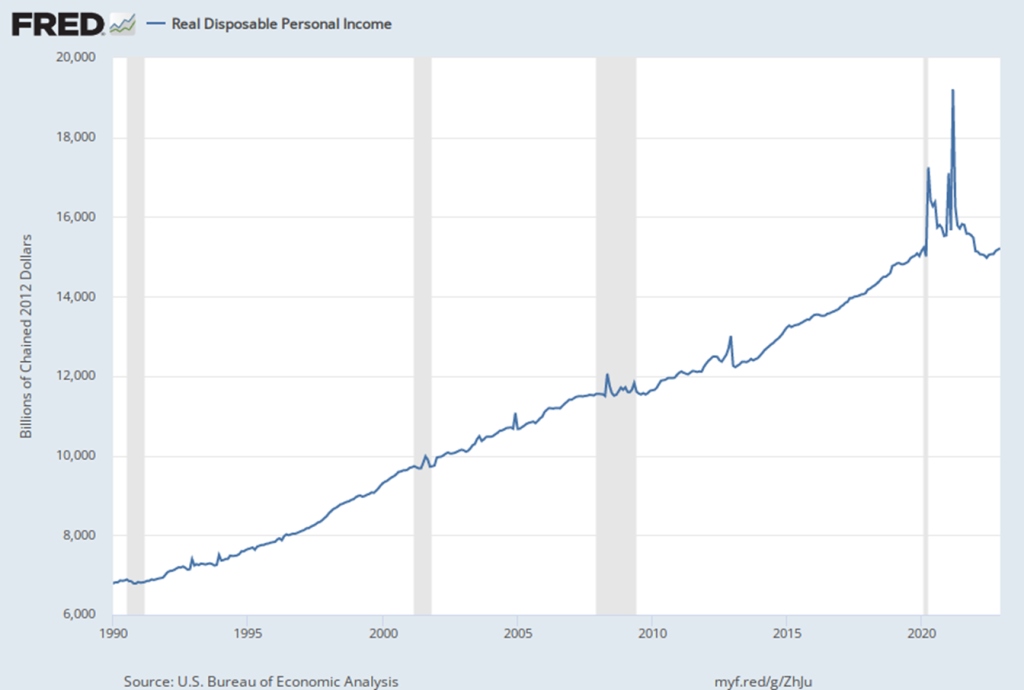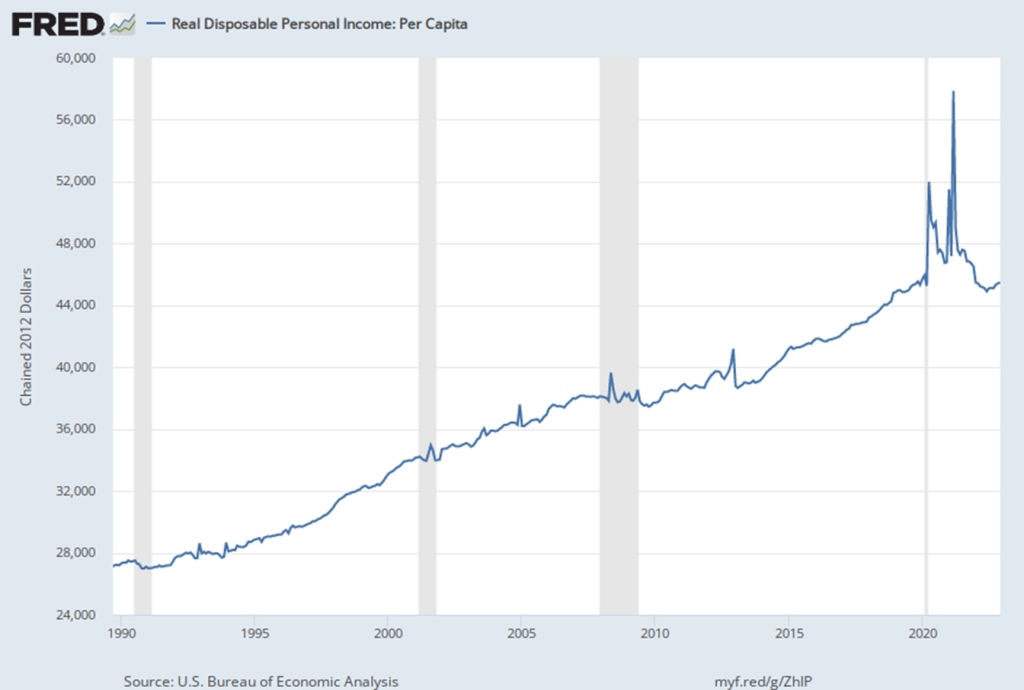Comments
- No comments found

When the pandemic hit, the general sense was that the US government couldn’t do too much to help, whether the assistance came in the form of stimulus checks, expanded unemployment payments, help to businesses (via the Paycheck Protection Program), tax cuts, and so on.
Now we can look back and see the patterns in disposable personal income–that is, income that people have after they have paid taxes and received government benefits.
The top panel shows total personal disposable income for the economy as a whole, adjusted for inflation, measured in billions of dollars. The bottom panel shows the same data on a per capita basis–that is, adjusted for the size of the US population. The data is monthly. Both figures are from the extraordinarily useful FRED website maintained by the Federal Reserve Bank of St. Louis.


What jumps out from these two figures is how dramatic the rise in personal income was, both right after the pandemic in spring 2020, and then after President Biden’s stimulus package was enacted into law early in 2021. Compare the shifts in real per capita income in 2020 an 2021 to what happened in the previous three recessions, and there’s just nothing remotely like it.
The sharp rises in disposable personal income help to explain why inflation started rising in mid-2021. The level of disposable and spendable personal income was spiking at a time when many parts of the economy (like restaurants, travel, and entertainment) were still shut down or quite constrained in many places, and at a time when supply chains were backed up. A working definition of inflation is “too much money chasing too few goods,” and that’s what happened. However, this impetus for inflation has faded in recent months, which has surely contributed to the rate of inflation sagging downward.
It also helps explain the “Great Resignation,” the pattern in which a number of people of working age dropped out of the workforce, and were not looking for jobs. Again, it will be interesting to see if some of those who left the labor market during the boom in disposable personal income return in the next year or so.
Finally, it also explains some of the economic stress that shows up in public opinion polls and news stories. After the much higher disposable personal income levels of the last two years, the economy has returned to 2019 levels of disposable personal income. That up and down is bound to be unsettling.
I find it hard to be too critical of decisions made in the teeth of the pandemic in early 2020. The level of uncertainty was just so very high. But it also seems to me that what the federal government knows how to do is send out checks–so that’s what it did. Meanwhile, policy questions like how to make more COVID tests available, or how to facilitate the most widespread and rapid distribution of vaccines. or whether to re-open schools in fall 2020 got considerably less attention.
Timothy Taylor is an American economist. He is managing editor of the Journal of Economic Perspectives, a quarterly academic journal produced at Macalester College and published by the American Economic Association. Taylor received his Bachelor of Arts degree from Haverford College and a master's degree in economics from Stanford University. At Stanford, he was winner of the award for excellent teaching in a large class (more than 30 students) given by the Associated Students of Stanford University. At Minnesota, he was named a Distinguished Lecturer by the Department of Economics and voted Teacher of the Year by the master's degree students at the Hubert H. Humphrey Institute of Public Affairs. Taylor has been a guest speaker for groups of teachers of high school economics, visiting diplomats from eastern Europe, talk-radio shows, and community groups. From 1989 to 1997, Professor Taylor wrote an economics opinion column for the San Jose Mercury-News. He has published multiple lectures on economics through The Teaching Company. With Rudolph Penner and Isabel Sawhill, he is co-author of Updating America's Social Contract (2000), whose first chapter provided an early radical centrist perspective, "An Agenda for the Radical Middle". Taylor is also the author of The Instant Economist: Everything You Need to Know About How the Economy Works, published by the Penguin Group in 2012. The fourth edition of Taylor's Principles of Economics textbook was published by Textbook Media in 2017.
Leave your comments
Post comment as a guest